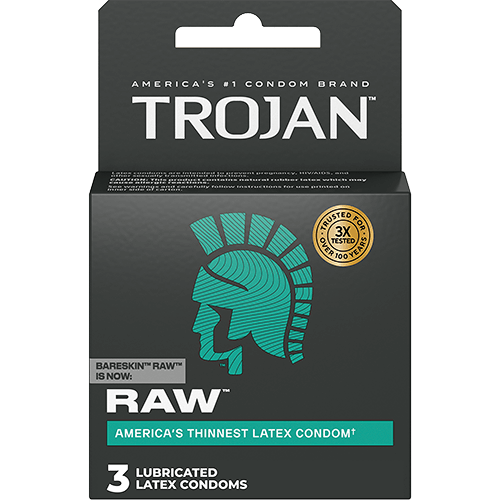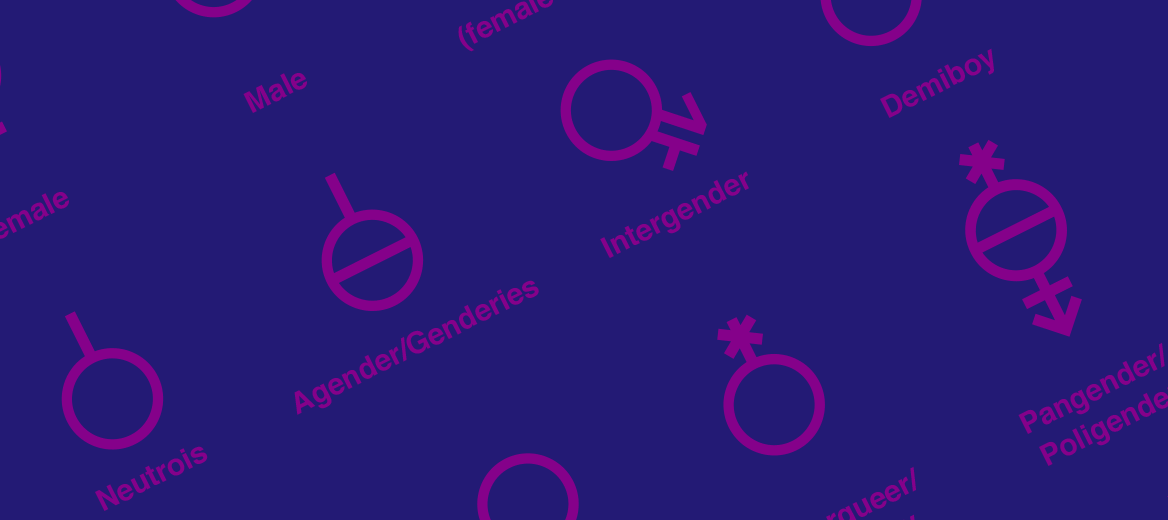Health + Wellness
Many Ways to Do it: Types of Sexual Orientations, Identities & Attractions

How do you describe who you want to have sex with if the opportunity arises? Are you a man who finds women sexually attractive, or a nonbinary person who is sexually attracted to women, men, and other nonbinary people? The gender of your sexual partners may matter to you a lot or very little. You may not feel sexual attraction toward anyone ever, or experience sexual attraction constantly, rarely or only to people you care about deeply. nonbinary person
The words we use to describe sexual orientation are changing and that can be both liberating and confusing. It can be exciting because you may finally discover a sexual orientation that perfectly describes who you're sexually attracted to. It can be confusing, however, because you may need to learn new terminology and think more carefully about something you might have assumed was simpler.
People are complex and sexual and romantic attraction can be mysterious and hard to define. The good news? There are many ways to experience sexual attraction to another adult and plenty of ways to consensually act on that attraction that bring satisfaction and pleasure.
1. Gay
2. Lesbian
3. Bisexual
4. Pansexual
5. Polysexual
6. Omnisexual
7. Straight
8. Asexual
9. Demisexual
10. Gray Ace
11 Allosexual
What is a Sexual Orientation?
Sexual attraction is about finding someone sexually appealing and wanting to have sex with them. Sexual orientation refers to who you tend to experience sexual attraction for. Your sexual orientation is about the gender, genders (or lack thereof) of the people you find sexually desirable. It also can describe whether you find those people sexually attractive all the time, sometimes, or never.
As people explore gender identity and sexual attraction more, they are discovering and describing more nuances about sexual orientation. Previous categories, such as the either/or of homosexual or heterosexual, do not fully describe the variety of people and genders experiencing sexual attraction for each other.
Sexual Orientation and Gender Identity
First, let's get a few clarifications out of the way.
1. Your sexual orientation is not the same as your gender identity. Gender identity is about who you are as a person and sexual orientation is about who you are attracted to. Having a basic understanding about gender identities may help you determine your sexual orientation, so if you're not sure or could use a refresher, read our article about understanding gender identities.
2. Second, in all cases in this article and on this site, when we refer to a man, we mean a person whose gender identity is a man, whether cis or trans, and when we refer to a woman, we mean a person whose gender identity is a woman, cis or trans. If you're not sure what cisgender and transgender are, read our gender identities article to learn more. For now, know that we're talking about who a person is, not what body parts they have.
3. Third, a sexual orientation is a general term for what gender(s) you find sexually attractive. Being sexually attracted to certain body shapes or bodies with specific characteristics or parts is a thing, but that isn't a type of sexual orientation. It's a preference.
4. Let's also be clear: sexual orientation is about which consenting, sexually mature adults you find attractive and want to have sex with.
5. And, it should go without saying but we'll say it clearly: each of these sexual orientations is valid and respected. Sexual orientation is an integral part of who you are, not a choice.
Definitions of Sexual Orientation
We've already stated that sexual orientation refers to the gender or genders of people you are sexually attracted to. Two words you may have heard about sexual orientation are heterosexual and homosexual. Although homosexual and heterosexual do not describe all types of sexual orientations (we'll get more specific below), they are useful baseline terms to know and understand.
"Hetero" means different and a heterosexual orientation refers to people who are attracted to a gender or sex that is different than their own. Heterosexual as an orientation is most often used to describe men who are sexually attracted to women and vice versa. Heterosexual is sometimes shortened to just "hetero" or even "het" and is generally referred to as being "straight."
People used to say heterosexual meant attracted to the "opposite sex," but that phrase confuses biological sex with gender and presupposes there are only two genders. It's more accurate to say sexually attracted to a different gender than your own, and then be specific about which gender you mean.
"Homo" means same, and homosexual is an umbrella term that means you are sexually attracted to people with the same gender as yourself. Homosexual and "homo" have been (and sometimes still are) used in derogatory and discriminatory ways, so you don't hear homosexual used as a sexual orientation very often anymore. Gay and lesbian are more specific same-same or homosexual orientations, and there are other sexual orientations that describe attractions to other genders - or not at all.
Different Types of Sexual Orientation
Here are some common sexual orientation types you might hear, and their definitions:
1. Gay
Gay typically refers to men who are sexually attracted to other men and is sometimes also known as MLM (men loving men).
Gay can also be a term that means sexually attracted to your same gender in general and "gay pride" can be an umbrella term to refer to all people who have a non-straight, non-heterosexual sexual orientation.
If you're reading an old poem or listening to an older song, you may also find the word gay used to mean joyous or festive (e.g. "don we now our gay apparel.") You'll have to look at the word in context to know if it means a sexual attraction between two men, generally queer or non-heterosexual, or very happy.
Note: gay is a specific sexual orientation and not a derogatory word or slur. Don"t call someone gay - or any other sexual orientation for that matter - unless they state that about themselves and don't use any word to describe sexual orientations to put other people down.
2. Lesbian
Lesbian usually refers to women who are sexually attracted to other women and is sometimes also expressed as WLW (women loving women).
3. Bisexual or Bi
Bisexual is a sexual orientation that describes someone who is attracted to more than one gender, or to people of your same gender and people of another gender. Although "bi" means two, bisexuality is not limited to two genders or the gender binary of male and female. People who are bisexual may prefer one gender more than another but still experience attraction to their same or a different gender.
4. Pansexual or Pan
Pansexual is a sexual orientation that typically means someone who is sexually attracted to all genders or attracted to people regardless of their gender. Most people with a pansexual orientation say they do not consider (or even notice) gender when it comes to sexual attraction - it's just not a factor in who they may want to hop into bed with.
5. Polysexual
Polysexual is a sexual orientation used to describe people who are attracted to two or more genders. "Poly" means many, so people who are polysexual tend to be attracted to some, but not all genders and, unlike pansexuals, gender plays a role in who they find sexually attractive.
Note: don't confuse polysexual with polyamory. Polysexual is a sexual orientation meaning sexually attracted to two or more - but not all - genders and polyamory means being in a romantic or sexual relationship with more than one partner at the same time.
6. Omnisexual
Omnisexual orientation can be defined as being attracted to all genders ("omni" means all) with gender as an important part of sexual attraction. Omnisexual differs from pansexual in that people who are pan tend not to factor the gender of their partner into whether they are sexually attracted to someone while people who are omnisexual do recognize gender as part of the attraction equation. People who are omnisexual may prefer one or more genders over others and may also be sexually attracted to people who are agender (have no gender identity).
7. Straight
Straight is a sexual orientation that basically means attracted to a single gender that is different than your own. It is usually synonymous with heterosexual. People who are straight experience sexual attraction to only one other gender that is not their own. Usually, being straight refers to a man sexually attracted to a woman or a woman for a man. If you discover that you are sexually attracted to more than one gender, you may find that one of the other sexual orientations describes you better.
Sexual Orientation is Also About When & Whether You Experience Sexual Attraction
Your sexual orientation includes who you want to have sex with as well as whether you experience sexual attraction at all.
Some people desire sex all the time and are sexually attracted to people that they don't know personally.
Other people do not experience sexual attraction to anyone and may be uninterested in sexual activity.
Many people fall somewhere in the middle and may have sexual attraction sometimes or only for people they have an emotional bond with.
1. Asexual aka Ace Asexual is a term to describe people who do not experience sexual attraction or sexual desire at all, to any gender, or who may have low interest in sexual activity. Asexual orientation is an important term to recognize because it is often assumed that everyone experiences sexual attraction and wants to have sex as often as possible and that simply isn't true. Asexuality is part of the LGBTQ+ umbrella.
2. Demisexual: A person with a demisexual orientation only experiences sexual attraction to someone they have formed a close emotional bond with. You might hear this shortened to just "demi." Demisexual folks aren't attracted to random people, only those they feel close to, and may not enjoy casual sex or hookups. If you meet someone who is demisexual, let them tell you what it means for them personally.
3. Graysexual, aka Gray Ace is a place on the ace spectrum that refers to someone who only sometimes or very rarely feels sexually attracted to someone, including those they know well or are in long-term relationships with. Gray ace folks typically are interested in sex, but generally not as often, or with as many people, as those who are allosexual.
4. Allosexual is the opposite of asexual and refers to someone who experiences sexual desire most of the time and does not need to bond with another person to be sexually attracted to them. While more people are allosexual than ace, gray ace, or demi, it's important to know that a person's relationship to sexual desire may be different from your own, and that's okay. Part of being sexually compatible with someone else has to do with how often you want sex, so the asexuality spectrum is an important item to discuss with your partner(s).
Someone who is asexual (ace), gray, or demisexual typically also identifies as one of the other sexual orientations that describe the gender(s) you are sexually attracted to. For example, you might be:
straight and asexual (attracted to someone of a single different gender than your own but rarely or not interested in sexual activity)
pansexual and demisexual (attracted to people of any and all genders, but only interested in sex with someone you have grown close to over time)
gay and allosexual (attracted to other men and experiencing sexual desire frequently and readily)
any other combination of the "who" and "when" parts of sexual orientation (e.g., omnisexual ace, polysexual demi, straight gray ace, lesbian allo, etc.)
Note: there is nothing 'wrong' with someone who is asexual, demisexual, gray ace, or allosexual. It's just different. People who are ace, gray, or demi are attracted to people in other ways, such as platonically or romantically. Just because you may be ready to strip off your clothes and get busy with someone you find attractive, available, and consenting doesn't mean others are also wired that way. Whether you're an always, sometimes, or never when it comes to sexual attraction, your sexual orientation is valid and real.
Understanding Your Sexual Orientation
Wondering, "what is my sexual orientation?"" is a normal part of figuring out who you are. There are labels and categories for common types of sexual orientation that can help you understand who you're sexually attracted to and find others like yourself. However, sexual orientation is individual, and you may define your sexuality in your own terms.
You may gravitate toward a certain sexual orientation initially but, after further exploration, discover that a different category is more accurate to describe your tastes. You may also find that your sexual orientations changes during your lifetime. You may not know everything about who you're sexually attracted to until you encounter it, and that is okay.
Whatever your sexual orientation, remember that sexual desire for someone does not always lead to sexual activity. Always get enthusiastic consent from a partner before beginning sexual activity and always practice safe sex to keep you and your partners healthy.
And remember, sex is supposed to be fun and feel good. Talk to your partner about what you like and don't forget that condoms, lubes or sex toys can take sex from ho-hum to oh wow! Here are some of our favorites:
Trojan™Bareskin Raw™ Lubricated Condoms - America's thinnest latex condom.
Trojan™Tandem Couples Vibrating Ring - take pleasure to new heights with powerful vibrations designed to stimulate both partners.
Trojan™Arouses & Releases Personal Lubricant - supercharged sensations and continuous lubrication to take it to the edge - and beyond.






